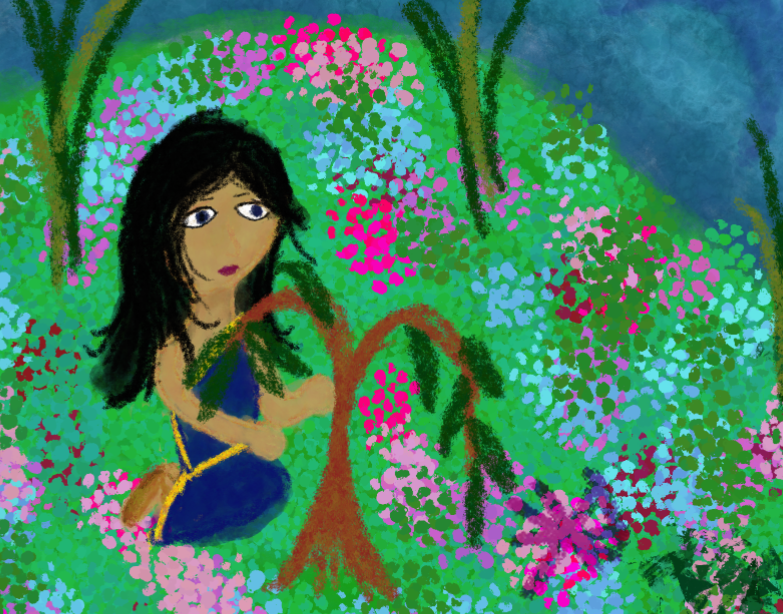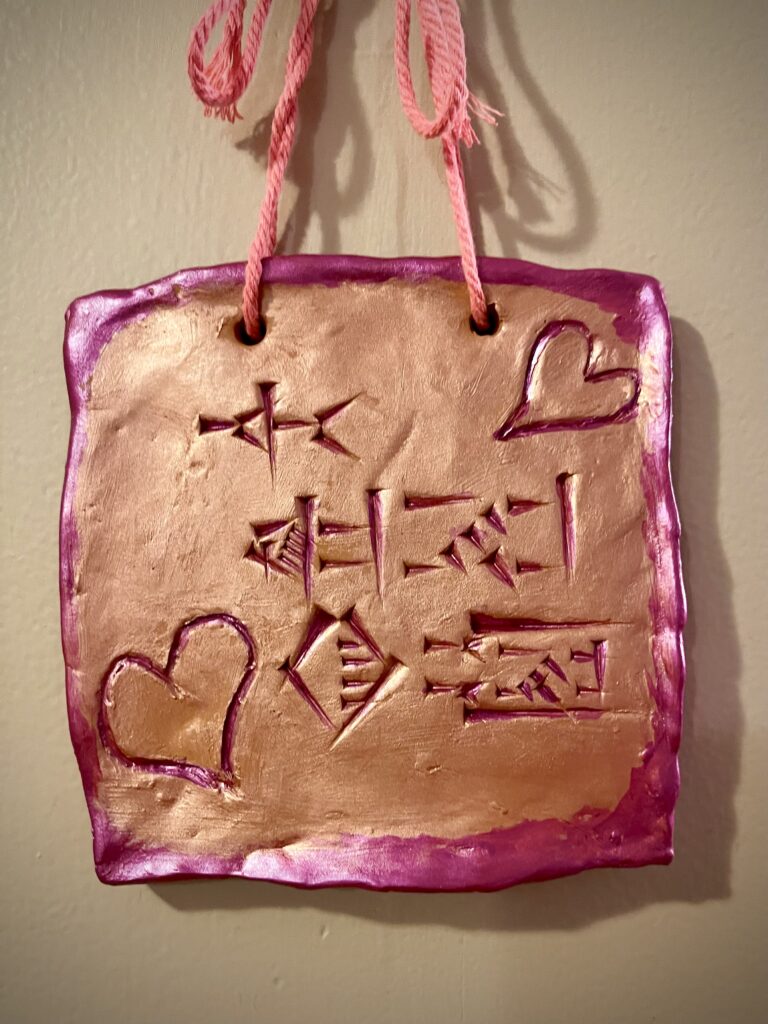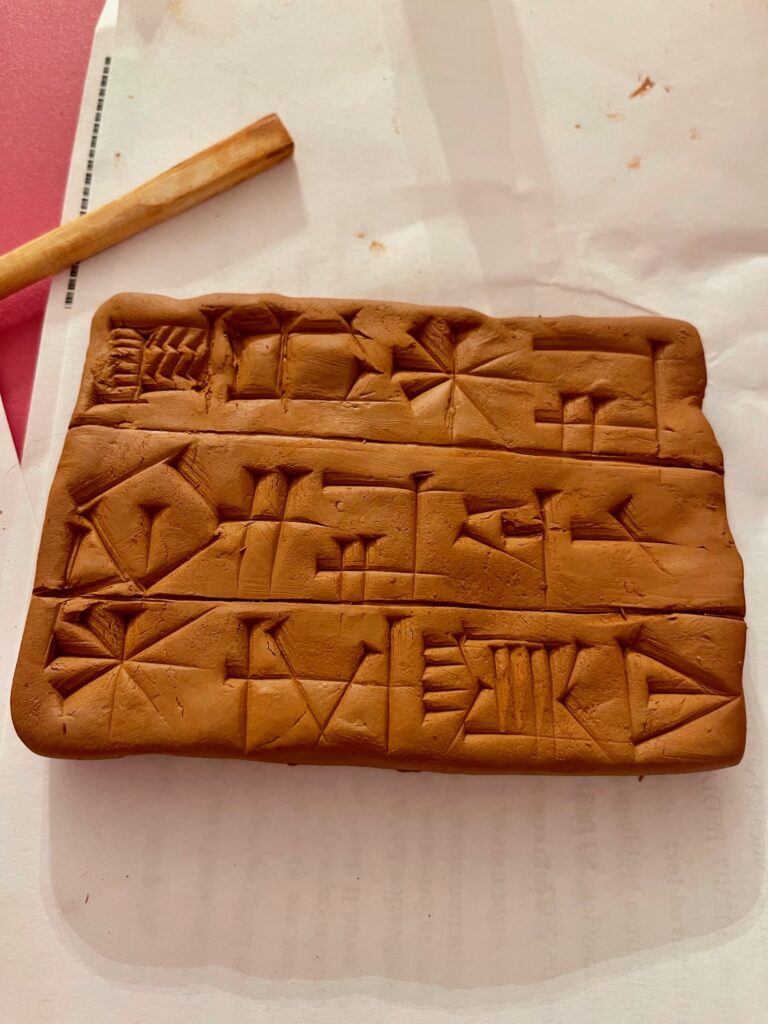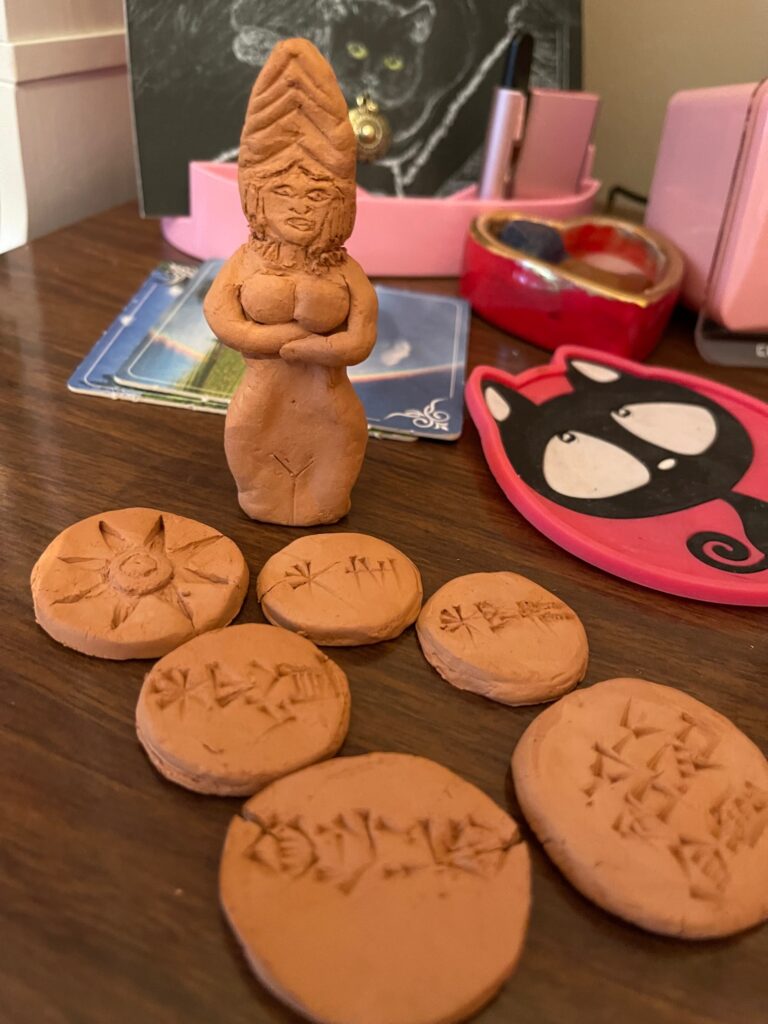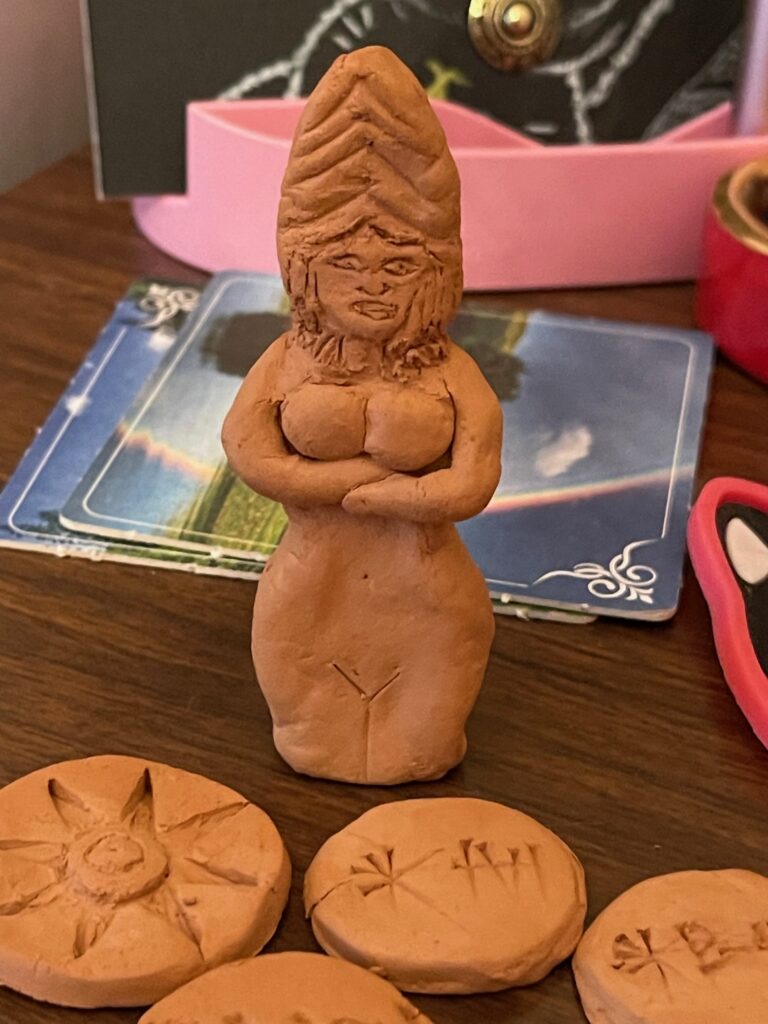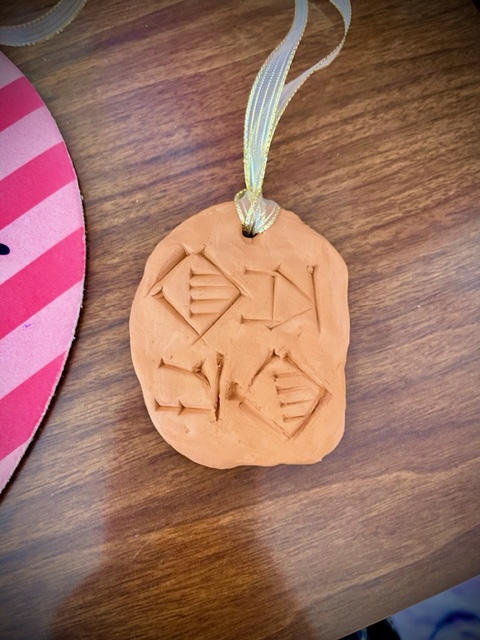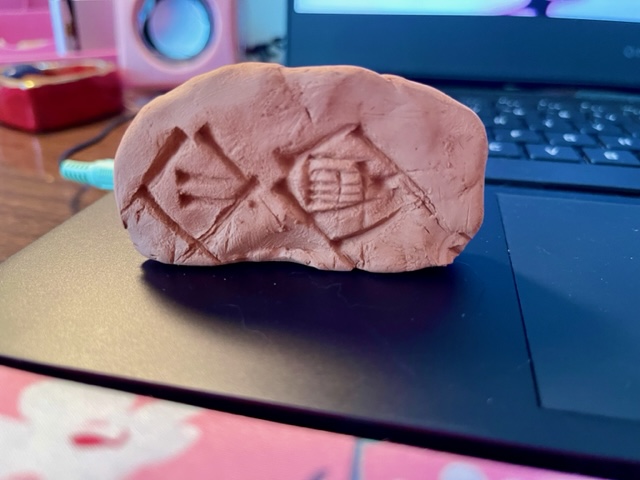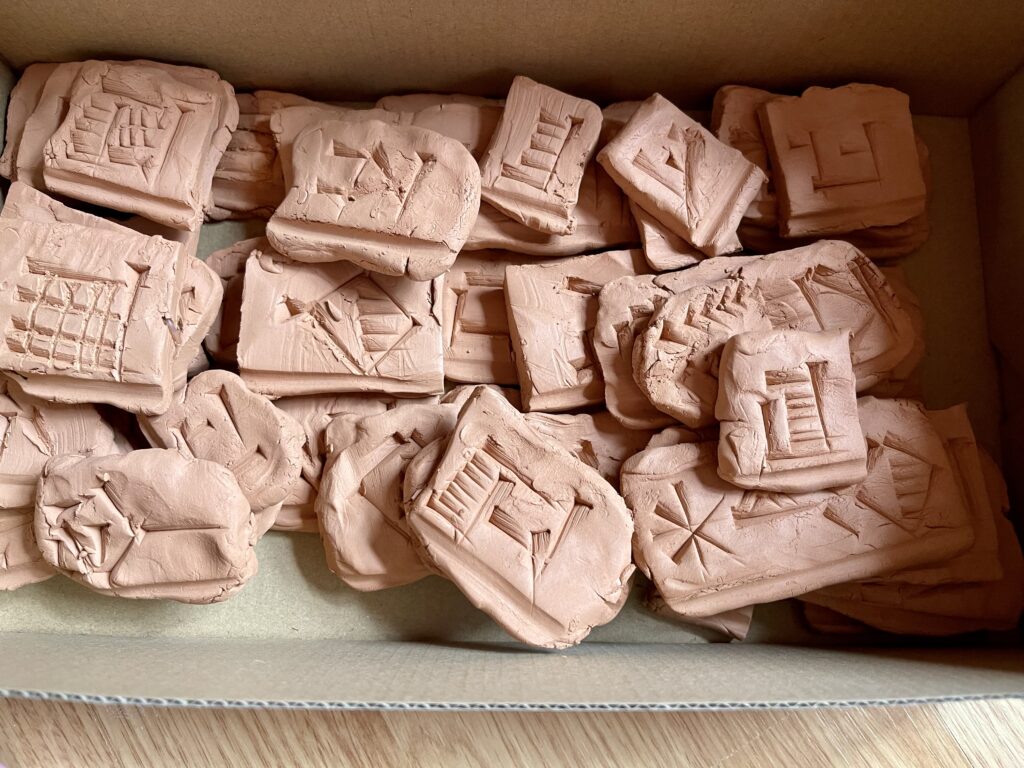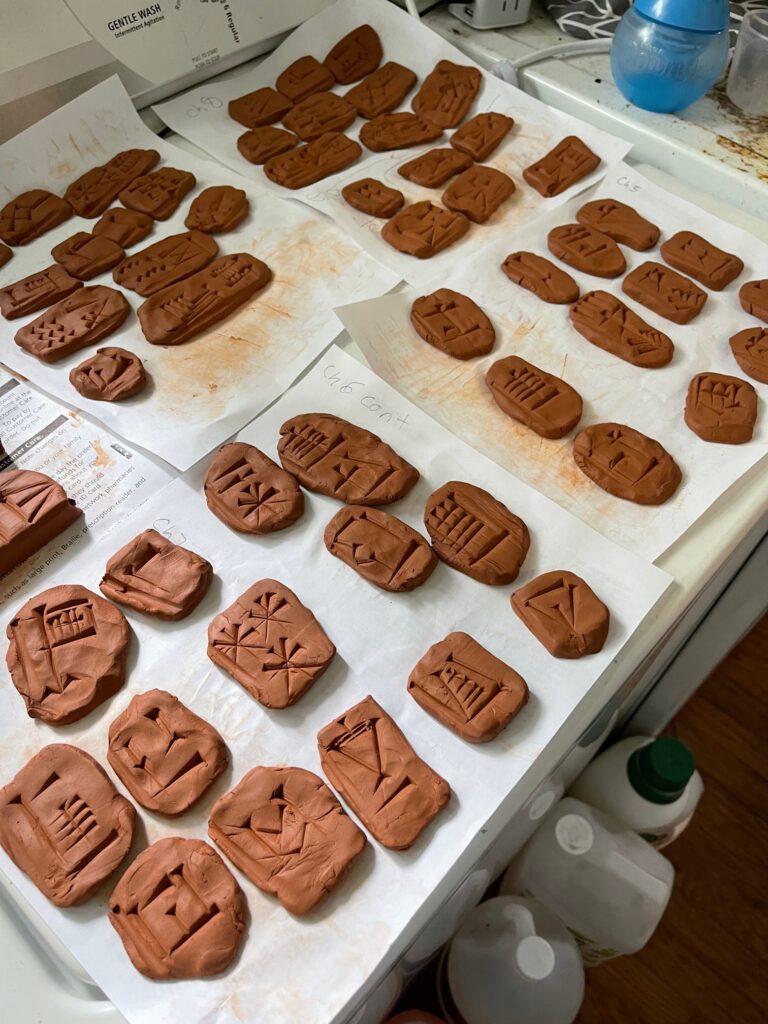In December I finished the second section of the Rod and Ring initiatory journey. For the main ritual I met Dumuzi/Dumuzid (I see both spellings equally when reading about Sumerian religion, so I’m not sure which is actually the preferred rendering of his name – so far I haven’t gotten any sort of sense that He prefers one or the other like I did with Amageshtin/Geshtinanna).
As with the Geshtinanna, I was already familiar with Dumuzi before meeting him in this ritual. Aside from Inanna Herself, Dumuzi and Ninshubur are the deities I most revere (I only began working with Geshtinanna in the last several months).
To be honest, I was a bit hesitant to start worshiping Dumuzi to begin with because I wasn’t all that interested in having male deities. Which is also part of why I was never really interested in learning about Wicca when I started learning about paganism and witchcraft. I’m sure there’s some psychological reasons in there that I need to uncover and deal with through shadow work, but I digress.
To enhance the experience with Dumuzi, I also started reading Samuel’s newest book, The Red Shepherd right before the last new moon. I expanded on the rituals of thanksgiving for the 3rd, 4th, 5th, and 6th nights of the Rod and Ring initiation by also incorporating the liturgy from the Red Shepherd and extending the ritual activity by 2 days to make room for all 6 liturgical texts.
There was one final ritual for this part of Rod and Ring to be done on the full moon, so I did that on the 26th. I skipped doing the ritual from another book I’m going through, Evil Speech Stand Aside, last month, and I’ll just start doing them on months when I don’t have another full moon ritual to do to make it last longer, rather than doing a bunch of different things on one night.
I also did the Sheepfold rite from the Red Shepherd already, and plan to do the rest of the rites throughout the year. I’ll write more about those later. I’m not actually going by the Babylonian calendar to schedule these like the book suggested since the agricultural cycle of the US is different from that of Mesopotamia, and my lifestyle isn’t really based on the agricultural cycle anyway as a suburban woman in 2024. The next section of Rod and Ring skips some months, so I’ll probably start doing the Red Shepherd rites around the new moon of months that I don’t do Rod and Ring activities.
I did something different for my artwork offering this month. I got a set of watercolor pencils for Christmas, so I wanted to experiment with those. I have no idea what I’m doing with them, but I suppose that’s also the case with most things…
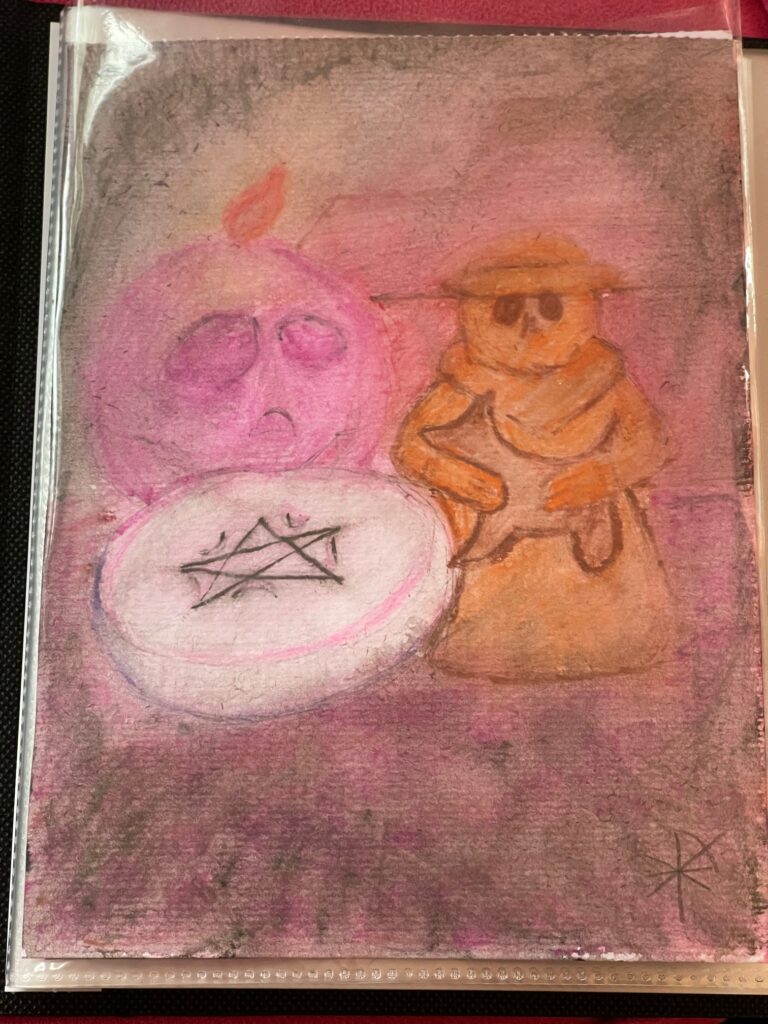
The first one is a painting of my statue of Dumuzi (which I based on an ancient figurine of a shepherd found in Girsu/Tell Telloh. The original probably wasn’t meant to be Dumuzi, but I am just so amused by how that particular statue looks, I had to recreate it), along with my skull candle holder and selenite plate. I just thought it looked nice on my altar during the rituals, so I made the painting to commemorate the ritual itself in addition to the deity. These items could also represent earth and the underworld.
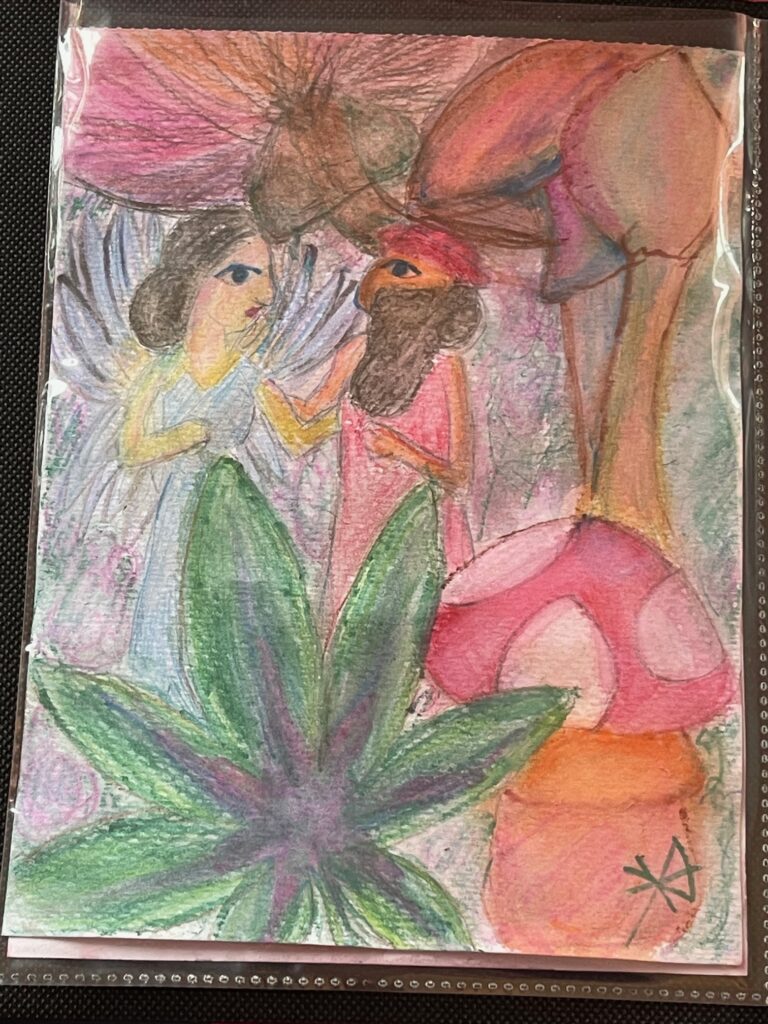
I also made a rendition of Inanna and Dumuzi, based on a relief carving depicting their marriage. I have no idea why I interpreted it in this way…
For Yule/winter solstice, I just did a simple Yule Log ritual and gave Inanna a special gift/offering. I don’t know that the Sumerians actually had a celebration for winter solstice, but I’ve been adapting different holidays and celebrations to fit my own religious practices. I used a small bit of apple wood for my yule log. It came from my apple tree that was destroyed in a snowstorm a few years ago. We cut down the remains of the tree but left the stump. The tree is regrowing now, and the wood I used was from the regrowth, symbolizing a time of rebirth and renewal.
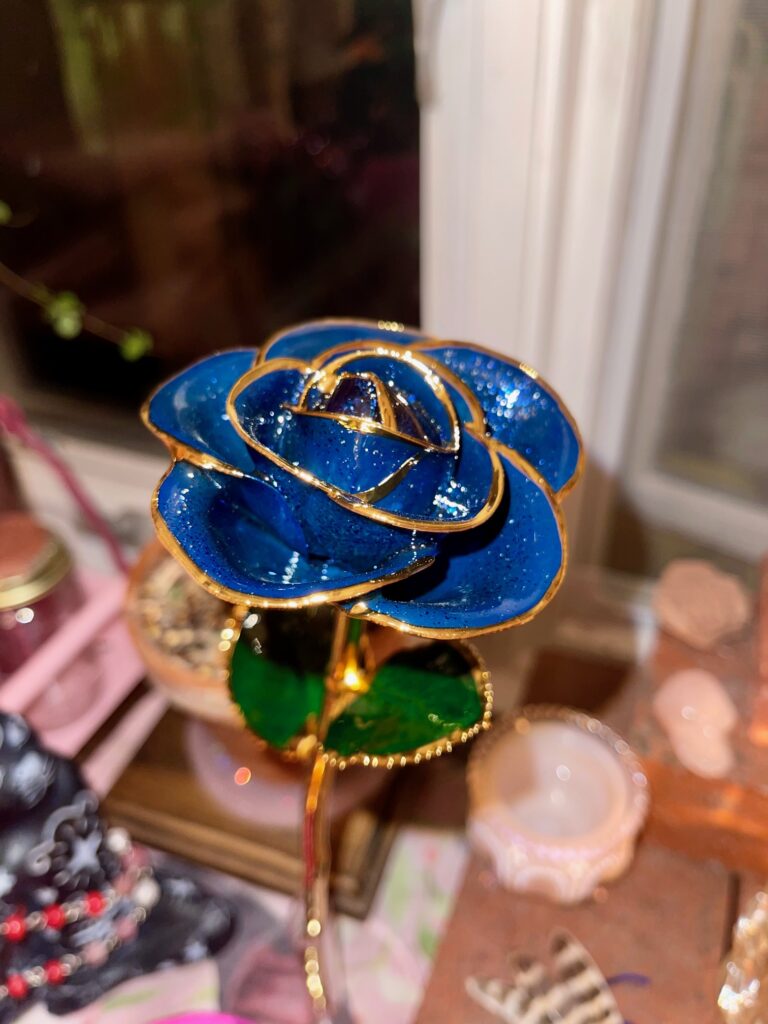
I like to give Inanna offerings of fresh roses from my garden throughout the growing season and was sad that I won’t be able to grow any for several months, so I got Her a gold dipped rose (which is a product I only knew about from listening to Howard Stern, so I hope She isn’t too offended! lol). I picked a sparkly blue one that reminds me of lapis lazuli and the night sky.
On Christmas, I decided it would be most appropriate to honor Dumuzi. I was already working with him a lot in December through the Rod and Ring initiatory rituals. And of all my deities, he is most similar to the Christian one, being a shepherd god and male. I gave him a nice offering of cheese on Christmas day. It was a simple and quick ritual.
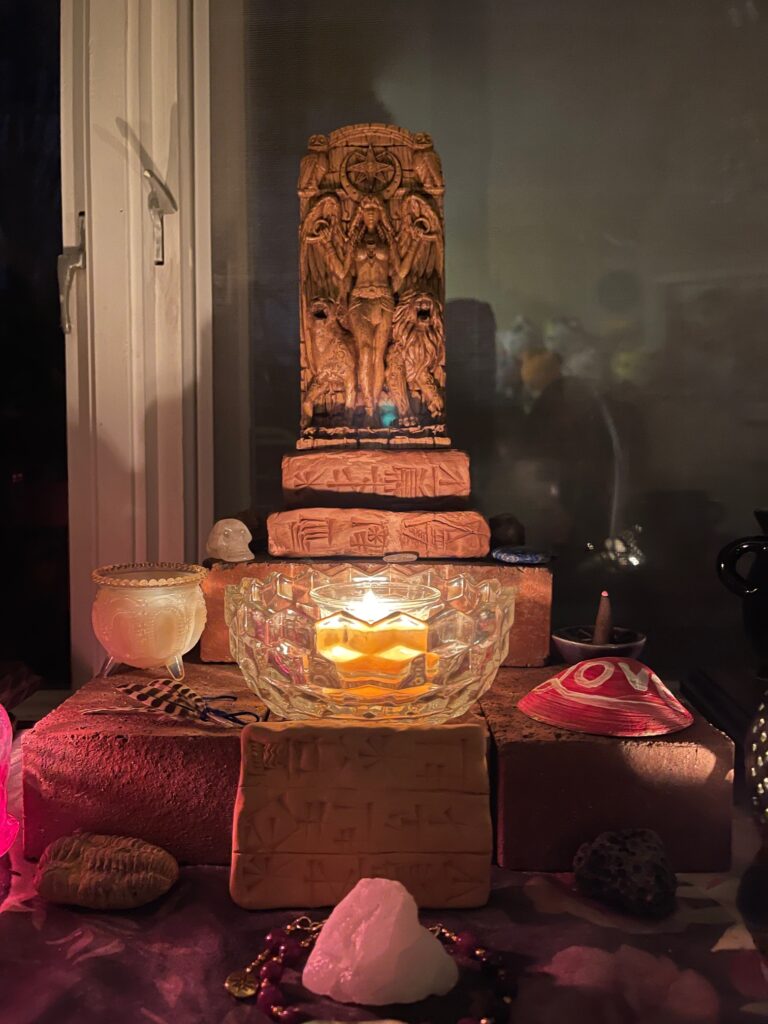
Back in November, did something similar, but a little bit more involved, to adapt Thanksgiving. I did a feast for all of my deities with offerings of things that they enjoy (like cheese for Dumuzi, dates for Inanna, etc.) right after doing a ritual to rededicate my temple to Inanna. I had recently thought of a name for my personal temple, E Ama Piring, Temple of the Mother Lioness, and I made a brick with the name inscribed in cuneiform to add to the dais, so I thought that improvement deserved a re-dedication ceremony (I hadn’t yet read ahead enough in Rod and Ring to know that I will be doing a temple dedication as part of my initiatory journey anyway, but that’s okay. That’s still months away and I’m sure I will have made plenty more changes by then).
